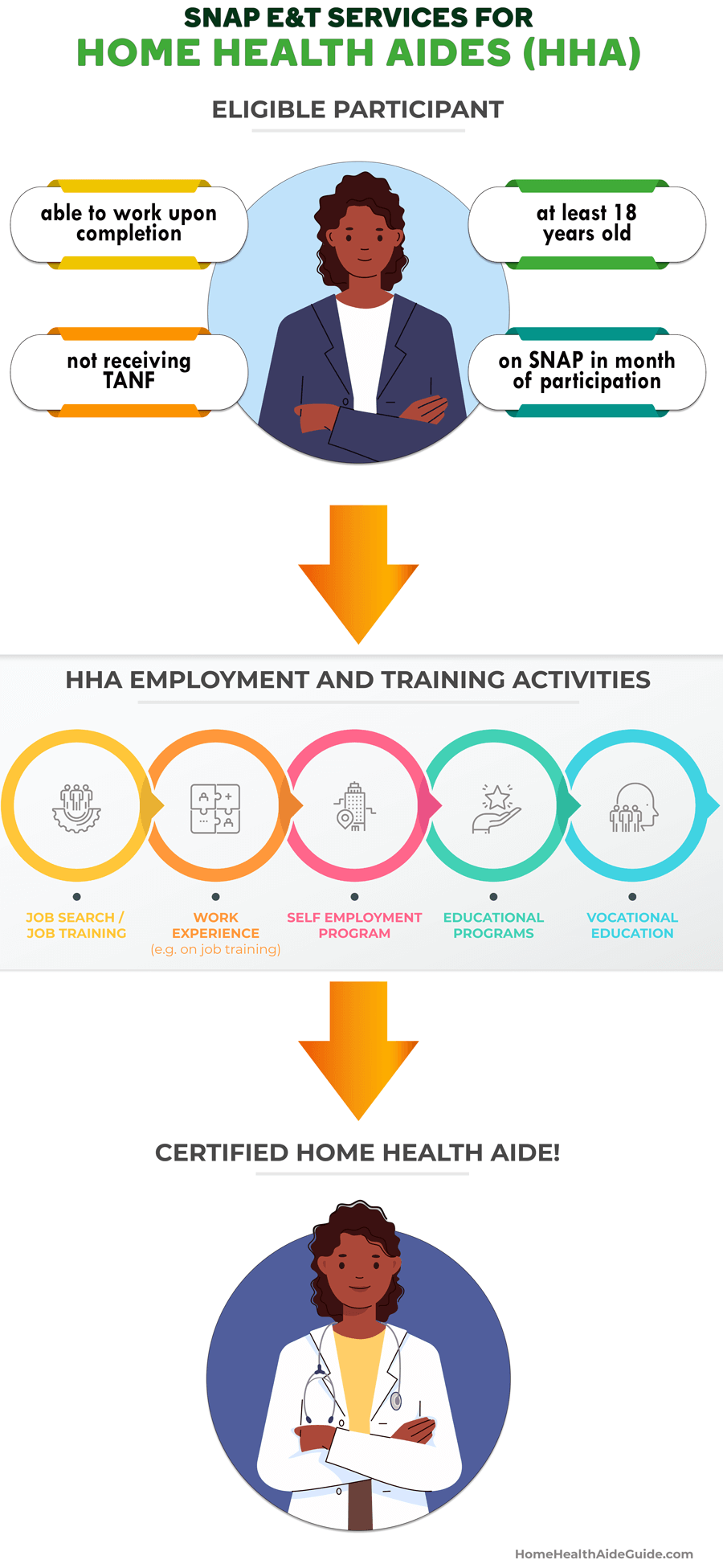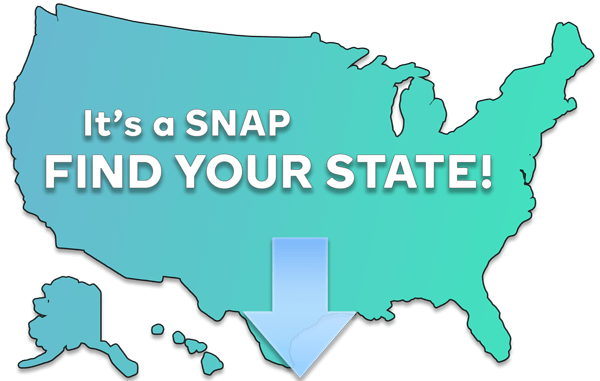SNAP offers FREE HHA training in every state
GET THE BENEFITS YOU DESERVE
Embarking on a career in healthcare is now more accessible than ever for SNAP recipients through our free Home Health Aide (HHA) training program. This comprehensive course equips you with the skills needed to provide vital in-home care to those in need, paving the way for a fulfilling and in-demand profession. By completing this training, you not only enhance your qualifications but also open doors to numerous opportunities in the growing healthcare sector.
Key questions that might be on your mind:
- Can SNAP recipients get free HHA training? – Yes, they can!
- What are the general qualifications? – Being a SNAP recipient and meeting certain income criteria.
- Why should you consider this career path? – HHAs are in high demand, and the training offers a path to a stable, rewarding job.
Continue reading to understand what SNAP is, its benefits, and how it can help you gain valuable skills in healthcare.
What is the SNAP program?
Formerly known as food stamps, the Federal Supplemental Nutrition Assistance Program (SNAP) is a U.S. government program that assists individuals and households get the food they need to stay healthy.

MATTER OF FACT
SNAP is one of the domestic anti-hunger programs that provides supplementary funds to enable many individuals to stretch their budget.
SNAP provides benefits to individuals who are eligible to receive low-income benefits, typically through an Electronic Benefits Transfer (EBT) card. This card may be used like a debit card to purchase eligible food at authorized retail stores.

To get SNAP benefits, you must apply in your state of residence and you must meet certain requirements, such as resource and income limits, which are outlined on this page. SNAP resource and income limits are refreshed on an annual basis.
In the vast majority of cases, your family’s combined gross income and net income must equal or exceed a certain amount to be eligible for public benefits. For a household consisting of two members in their 60s, the SNAP income limit is $1,888 in gross income and $1,452 in net income.
To learn more about SNAP programs in , get in touch with your local SNAP office.
NOTE: Each state will have its own application form; it is not administered at the federal level.
How Does SNAP Benefit You?
- Nutritional Assistance: SNAP provides funds for you to buy healthy food.
- Financial Relief: It frees up income for other essential expenses like rent and utilities.
- Eligibility for Other Programs: Being a SNAP recipient can open doors to other forms of assistance, such as free HHA training.
How SNAP and HHA Training Relate
| SNAP Benefits | How it Helps in HHA Training |
|---|---|
| Financial Aid | Covers training fees or offers significant discounts. |
| Networking | Connects you to organizations and job opportunities in healthcare. |
| Stability | Allows you to focus on training without worrying about food security. |
The benefits of SNAP go beyond food assistance. It can be the stepping stone you need for a career as a Home Health Aide.
HHA Training and Employment for SNAP recipients
SNAP Employment and Training (E&T)
The SNAP Employment and Training (E&T) initiative is designed to assist those receiving SNAP benefits in acquiring skills and securing employment that leads to financial independence.
Participants of SNAP can take advantage of training programs for roles like home health aides, along with support services aimed at facilitating their entry or advancement in the job market. The program also addresses obstacles to employment by offering assistance with essential needs, including transportation and childcare, as participants gear up for and secure jobs.
Every state is mandated to implement a SNAP E&T program and is allocated federal funds each year to manage and administer these services.
Job Prospects for HHAs
The demand for Home Health Aides is on the rise. According to the U.S. Bureau of Labor Statistics, employment for HHAs is expected to grow by 34% from 2019 to 2029—much faster than the average for all occupations. With an aging population and a focus on home-based care, there’s never been a better time to become a Home Health Aide.
Importance of Certified Training
While some might argue that you could work as a Home Health Aide without formal training, certification opens more doors and often leads to higher pay. Certified training provides:
- Skillset: Learning necessary skills like administering medication and using healthcare equipment.
- Knowledge base: An understanding of patient care, healthcare laws, and protocols.
- Certification: A certificate that enhances your job prospects and pay grade.
Certified training prepares you for the job responsibilities of a Home Health Aide and increases your employability.
Qualifying for the free HHA training under SNAPS?
SNAP participants automatically qualify for the SNAP training programs designed to help participants gain skills and find work that can move them forward to self-sufficiency. Through the SNAP E&T program, participants can access the support they need to gain an edge in the workforce.
TO THE POINT
As a food stamp (SNAP) recipient you are entitled to free home health aide training – and training and job opportunities in any industry!
The need for SNAP participants to receive the education and training they need to transition to economic self-sufficiency is increasing.
Most jobs in the future will likely require some postsecondary schooling, but many SNAP participants have not attained this level of educational attainment.
Without the necessary skills to meet rapidly shifting job market demands, the chances of participants receiving assistance from SNAP and keeping that assistance are very slim. Fact of the matter is, longer-term participants are likely to have less than a high-school diploma as compared with their higher-educated peers.
What this means is that you can access all sorts of free training opportunities to get you started as a home health aide or just about any job in any industry.
Every state, by law, has to offer this to all SNAP participants!
SNAP E&T offers
SNAP recipients can change their lives once they develop the skills necessary to move up the socioeconomic ladder. Each state has a SNAP Work and Training program that can train SNAP participants and facilitate their job search, as well as provide the things they need to stay on the path to self-sufficiency, such as transportation, educational tools, and childcare.
Can I participate in the SNAP E&T program?
Yes, here’s how:

In order to be eligible to use SNAP for E&T services, you must be receiving SNAP and not receiving Temporary Assistance for Needy Families (TANF). You must also be able to work, and your eligibility for SNAP for E&T also will depend on your state’s E&T program.
In some states, you may be required to complete the SNAP E&T program before you are eligible to use SNAP. For example, in Mississippi, you must complete the SNAP E&T program before you can receive cash assistance. In other states, such as Connecticut, you may be eligible for both SNAP and TANF at the same time.
SNAP E&T program
Your state will provide you with complete information and how to apply for SNAP.
Click the map below and start accessing your free benefits today!


